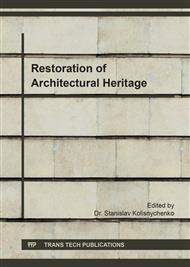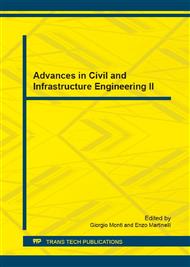p.204
p.210
p.222
p.233
p.240
p.248
p.257
p.266
p.273
Numerical Analysis of Rigid Body Behaviour
Abstract:
The methodical study of seismic safeguard of artistic heritage has considerably spreaded in the last years, thus increasing researchers’ interest in problems concerning monumental buildings. In particular, the seismic safety of art objects, that are the objects generally contained within Museums, is a research field of great interest, being part of research and policy in the more general field of Cultural Heritage, with contribution of several local government and European research grants. It must be noted, in fact, that buildings of historical and cultural significance may contain objects of inestimable value, for which there is no assessment of their effective vulnerability related to how they are displayed or stored. The case of statues and ceramics placed on pedestals, not equipped with any isolation system capable of mitigating the oscillations induced by possible earthquakes can be just considered as an example. This paper focuses the attention on this last problem, i.e. objects that can be considered as rigid bodies simply supported on the main structure, leaving out of account the filter’s effect due to the action of structure on the show-case or furniture. This problem is the same of a large class of non-structural components, such as mechanical and electrical hospital and laboratory equipment that can lose their functionality because of earthquake motions, and structural problem, such as isolated constructions made of superimposed rigid blocks in archaeological areas. The results of a numerical analysis on the rocking behaviour of rigid bodies are compared with experimental dynamic tests performed on simple shaped objects made of different materials and simply supported on a shaking table.
Info:
Periodical:
Pages:
240-247
Citation:
Online since:
July 2016
Keywords:
Price:
Сopyright:
© 2016 Trans Tech Publications Ltd. All Rights Reserved
Share:
Citation:



